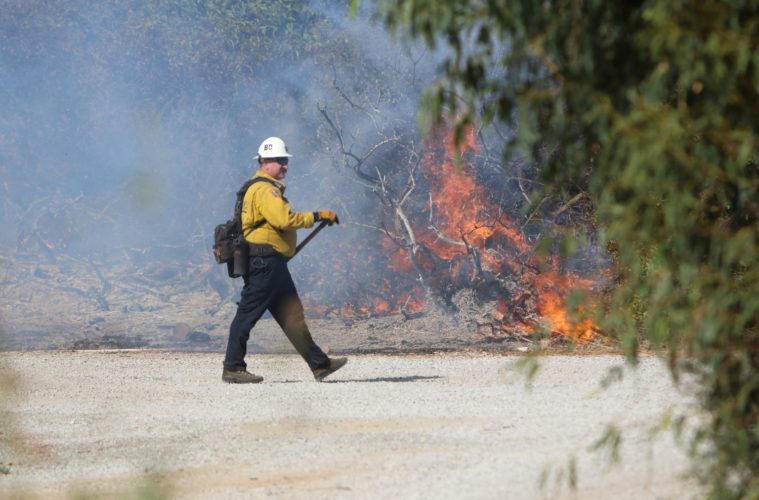Residents across Orange County are no stranger to wildfire activity, including the Silverado Fire that caused the evacuation of 90,000 residents in Irvine and Lake Forest last October.
Now, a decade-long study on California’s wildfire season, performed by the Department of Civil & Environmental Engineering at the University of California, Irvine indicates that climate change-driven factors are creating large, destructive wildfires earlier and more often each year.
The study, which was published in the Journal of Scientific on Tuesday, April 22, revealed that the annual burn season for wildfires in California has increased more in the last 20 years, than ever before.
Tirtha Banerjee, assistant professor of civil and environmental engineering at UC Irvine, and co-author of the study, explained this study was accomplished by comparing data from the California Department of Forestry and Fire Protection between 1920-1999 to current wildfire data between 2000-2019.
“CALFIRE data show that each new year of the 21st century has been a record-breaker in terms of wildfire damage in California,” Banerjee said. “We also have seen that about 80 percent of the total number of the state’s wildfires over the past few decades have been small, measuring less than 500 acres. But when fires get large, their deadliness greatly increases.”
Congrats to PhD student Shu Li & @Banerjee_Lab on their published study! Learn more about their study at UCI News & in Nature Scientific Reports:https://t.co/fHdngmJ0yzhttps://t.co/yfhTlbRwC6#UCIrvine #Environmental #Engineering #California #Wildfires #Research pic.twitter.com/LirSvO2X2r
— CEE@UCI (@CEEUCI) April 22, 2021
By focusing on the annual frequency of wildfires in previously burned areas, along with a variety of naturally occurring and man-made causes, the UCI study showed that seasonal wildfire growth is being accelerated by high temperatures, lack of humidity, and drought, along with other man-made factors.
In an interview with Irvine Weekly, Banerjee added that locally in Orange County, the Santa Ana winds, combined with years of drought in Southern California, have created conditions “perfect for burning.”
“I go in my backyard when the Santa Ana winds come and I see first-hand how dry the trees can become,” Banerjee said. “In general, the drought makes [the trees] shut down their stomata, and makes the conditions perfect for burning.”
However, while it is clear that California is experiencing never-before-seen wildfire activity, Banerjee explained that this data should help us see patterns, especially within the area known as the Wildland-urban interface, which is defined as the transitional zone between wilderness and man-made land developments.
“It’s not necessarily scary a situation … what is happening currently. And what is happening in the last 100 years helps us prepare better as wildfire season is approaching us,” Banerjee explained. “Now, [the peak] is in late summer, so we can gather our resources a little earlier, and we can also focus on the area – I think the conclusion of the study should be read in that way – how can we manage better?”
Banerjee added that data from the study also points to adopting a behavioral change in the way wildfire management is approached.
“We shouldn’t be reactive to the fire issue – we should be more proactive,” he said. “We have to manage our forests in a way so we can reduce the intensity of the massive fires, but we also have to understand how to live with the fires, because we have a lot of ecosystems in California that need fire to survive.”
In terms of regionality, Banerjee added that wildfire activity is not isolated to the West Coast. Wildfire is a global phenomenon, but due to the human integration in the Wildland Urban Interface on the West Coast, wildfire has become a threat to daily life.
“The issue on the West Coast is that you see many more people in the path,” he said. “The East Coast also has ecosystems that have evolved with fires — there’s just many more people living here.”
Advertising disclosure: We may receive compensation for some of the links in our stories. Thank you for supporting Irvine Weekly and our advertisers.

